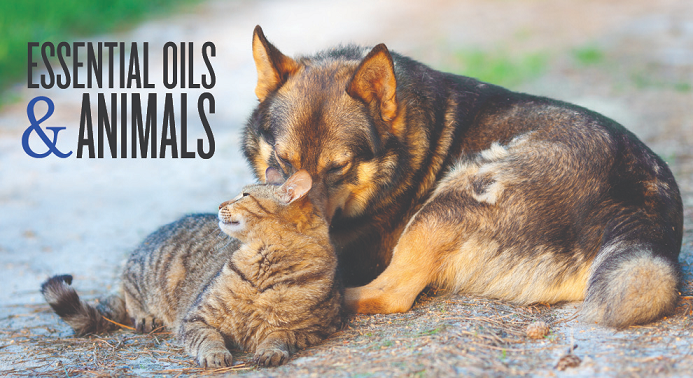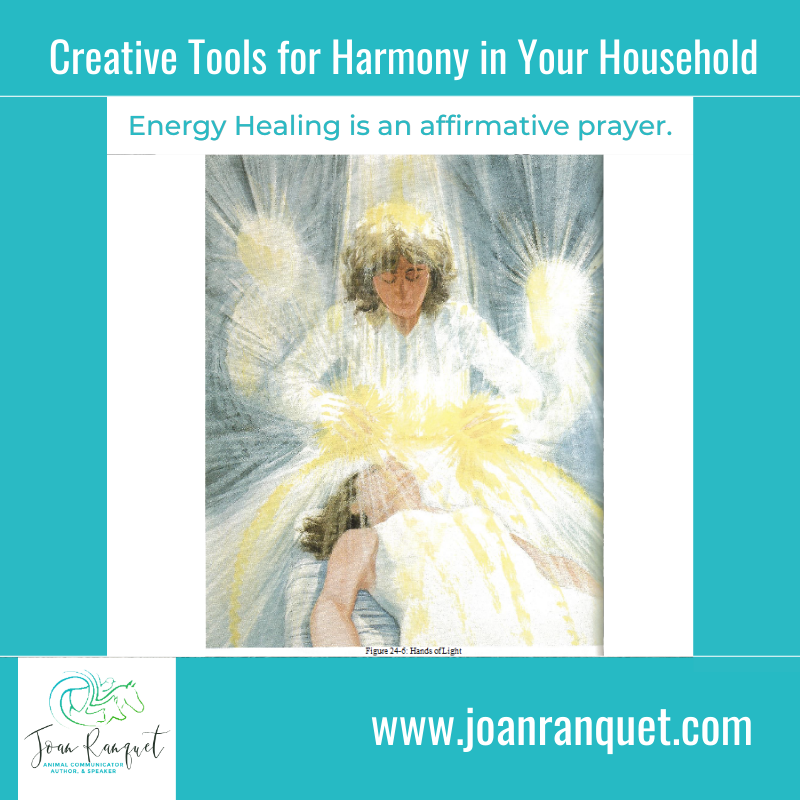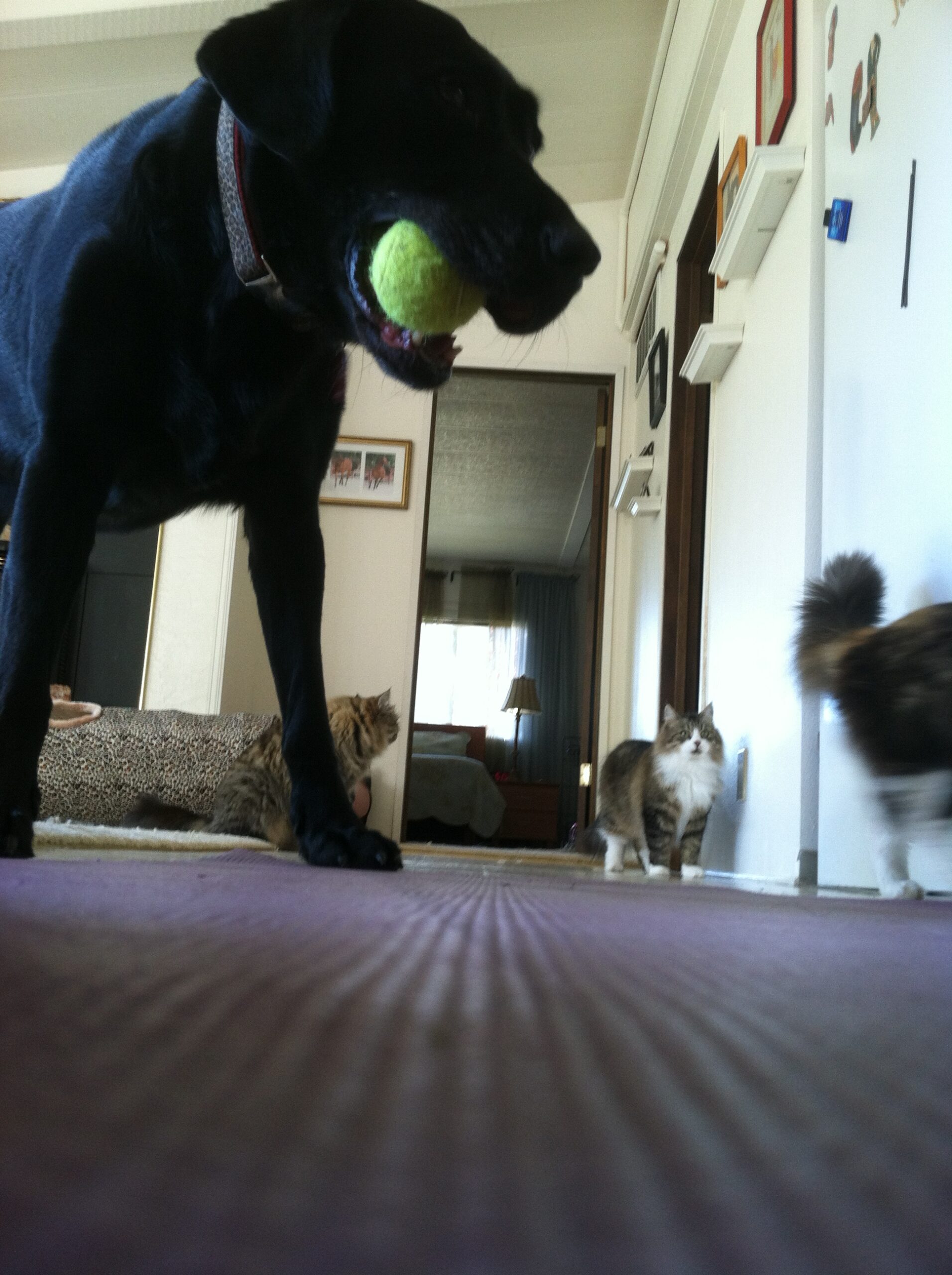Energy Healing for Animals with Essential Oils


As we head into the holidays, we often see our animals as stressed as the people. I’d love to share tips and treatments for calming all life!
Excerpted from my book Energy Healing for Animals (Sounds True):
Essential Oils


An essential oil, consisting of the plant’s energy and frequency, is contained in teeny molecules that vaporize easily and can quickly enter the nose and bloodstream. They are thought to affect every cell of the body within twenty minutes and are then metabolized like other nutrients. Because these volatile molecules are so light and move so quickly, they can cross the blood-brain barrier as well as move into tissues and influence cells. You can reach the entire body at once with this treatment method.
The oil itself carries a very high frequency, while mental, physical, and emotional challenges vibrate at lower frequencies. On an energetic and therapeutic level, these potent little molecules can raise an animal’s frequency almost immediately.
Essential oils go straight into the limbic system, the brain’s overseer of emotion, behavior, long-term memory, and the olfactory system. This is why we can have an emotional response to someone’s perfume, and why the aromas of certain things can trigger memories for us, with feelings attached, good or bad.


If you’re wondering how essential oils can be so powerful, consider pheromones, the “essential oil” chemicals that various animals secrete to elicit a specific response. The chemical involved can have a social, sexual, or emotional function, among others. The social function is about territory. With cats, even those that have been spayed or neutered and can no longer actually spray, they still produce a territorial scent to create a boundary.
Pheromones can also be produced or replicated commercially. A case in point is commercially available cougar pee, used to ward coyotes off farms. And for a more urban or suburban household, we can use scents to ward off the neighbor’s tomcat or even to help ease the effects of bringing a new animal into the home.


Who does this help? The answer is anything or anyone who has nostrils and breathes through them! Essential oils can help with anything from being able to breathe more deeply to relaxing to expediting healing after surgery. They also help when it comes to grounding, easing anxiety, elevating depression, and much, much more.
One of the most important things our wonderful autonomic nervous system takes care of for us is breathing. It also takes care of our heartbeat and the blinking of our eyes. But when we humans are faced with something that generates anxiety, such as an equestrian performance— a big jump or a dressage test —our fear can inhibit our breathing. And then, in turn, our limited breath can minimize our horse’s ability to breathe deeply and stay relaxed. So while I’m enthusiastic about using essential oils for healing your animals, it’s beneficial to your animals when you use them too!


In other words, we have suspended our own ordinary functioning—normal breathing—because our emotion around an event is bigger than the event itself. For horses and their riders caught up in this kind of anxiety, something as simple as applying some peppermint or eucalyptus on both the horse’s and the rider’s chests works wonders. It helps both breathe more deeply and relax into the ride. Another good choice is frankincense, as it’s good for the lungs and is known to calm and slow breathing.


A special note about birds: Birds have a very hard time with essential oils, so using them is not at all advised. In fact, many birds have a tough time if their cage is in the kitchen, surrounded with cooking smells and particles, because their respiratory systems are so fragile.
Who is qualified to do or to prescribe this? There are many online schools and certification programs for aromatherapy and essential oils. There doesn’t seem to be a licensing procedure, but there is a National Association for Holistic Aromatherapy. Most people who do this professionally combine it with another practice like massage therapy, animal communication, or a veterinary practice.
The benefit of working with someone who has studied essential oils is that they’re as familiar with the properties of the oils as a chef is with the properties of foods. They also know how to combine oils and which oils work better when combined with others.
Can I try this at home? Yes, and when you’re working with animals, there is a very simple way to select the oils: the animals themselves get to pick the frequency they need! If an animal doesn’t like something, you’ll know it right away—it will turn its head away or even walk away. See Video
But if it likes it enough to want to eat the oil right out of your hand, you know you’re on to something—it’s that simple. You won’t find an animal on the fence about smells, especially if they bring up negative memories and emotions. Playing like this with essential oils is truly one of the greatest ways to help our animals experience their own innate healing ability.
Please note: If you are pregnant, be careful. Educate yourself about handling essential oils because they are very powerful, and be sure to dilute the oils with a carrier oil (coconut oil, vegetable oil, etc).





